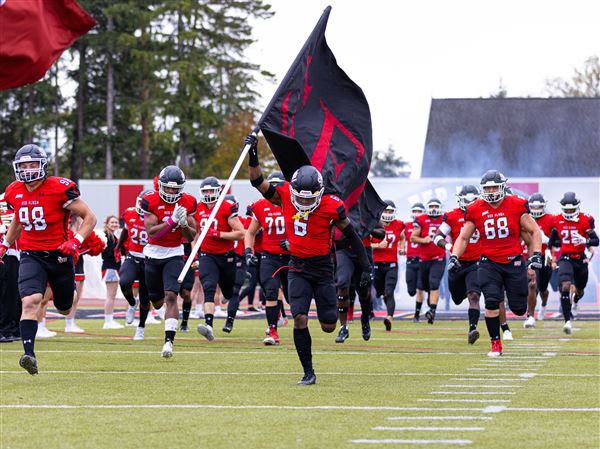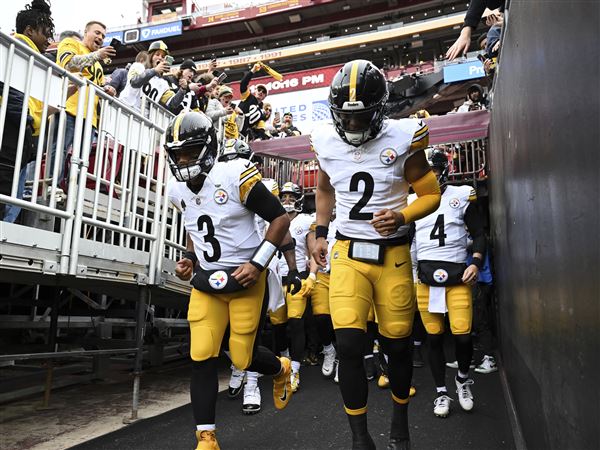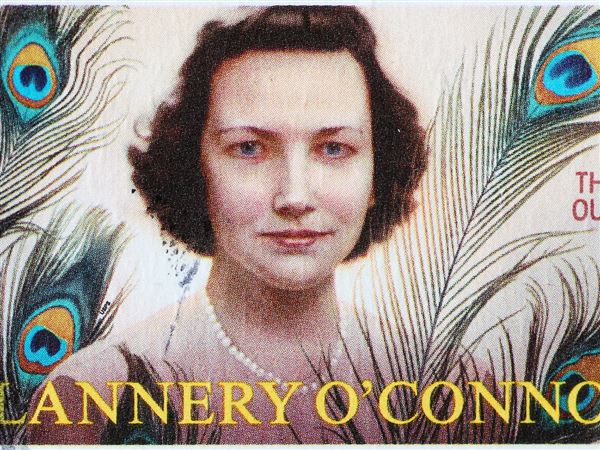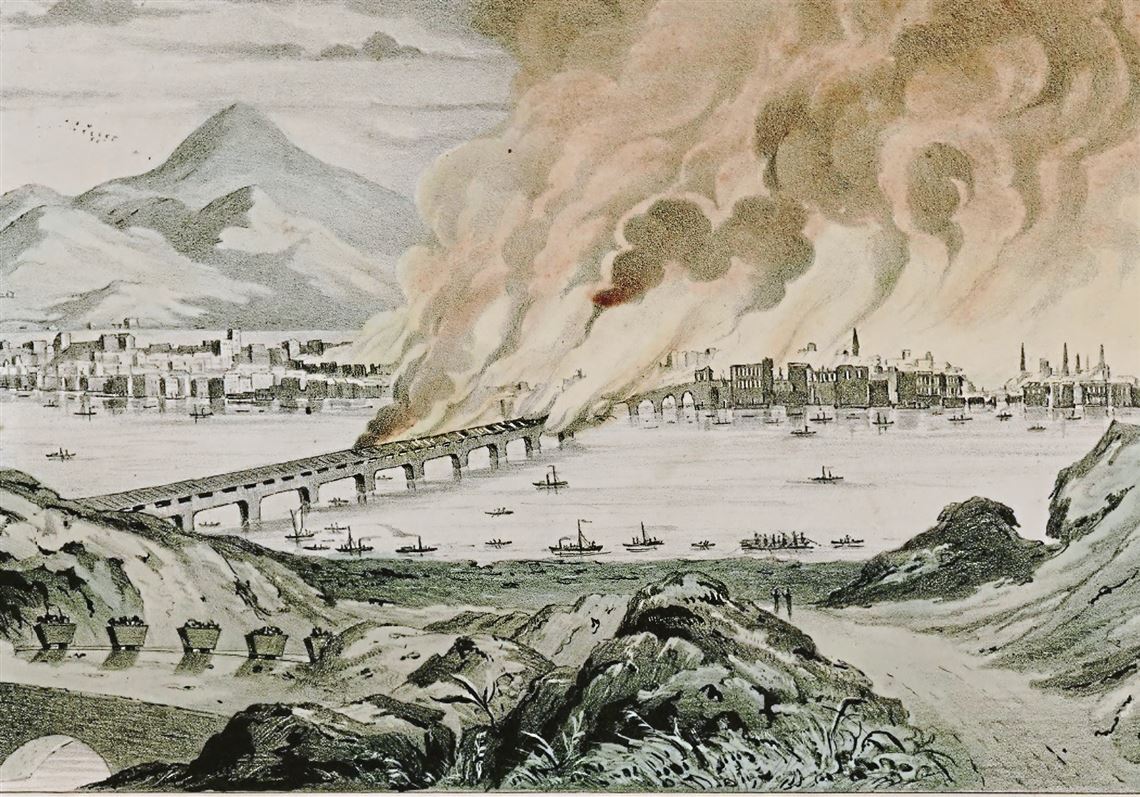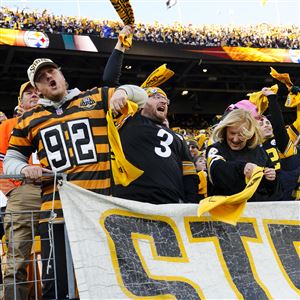Gale force winds fueled Pittsburgh’s Great Fire of 1845, fanning a sea of flames from Third Street to the Monongahela River.
The fire reduced a third of the city to ashes and left more than 10,000 people homeless. Property damage was estimated at between $5 million and $8 million. Flames also destroyed the superstructure of the covered wooden Monongahela Bridge, cutting Pittsburgh off from a southern overland trade route.
“By April 1845, right after the fire, Pittsburgh finds itself with no overland route north and no overland route south,” said Richard Haw, author of “Engineering America: The Life and Times of John A. Roebling.” The first new biography of the bridge engineer in 75 years, it will be published this month by Oxford University Press.
To build a new bridge over the Monongahela River, city leaders turned to Roebling, a German immigrant, experienced civil engineer and a pioneer in producing wire rope. Starting in 1842, Roebling employed Butler County residents of Saxonburg in the strenuous tasks of pulling, laying out, spinning and binding wire rope in the 500-foot-long meadow that was his backyard.
One day after the Great Fire, Roebling returned to work on April 11, 1845. He knew the city’s ability to achieve the first of many comebacks required reconnecting with trade routes. His goal was to finish rebuilding the Allegheny Aqueduct, the last leg of the Main Line Canal, which was Pittsburgh’s link to Philadelphia. A year earlier, the wooden aqueduct had fallen into the Allegheny River.
Pittsburgh’s leaders, Mr. Haw said, “are desperate for both these bridges to be both up and running.”
On June 2, 1845, Roebling boarded a boat that crossed the Allegheny Aqueduct, rebuilt and reinforced with wire rope. Citizens cheered, a band played and nearly a dozen boats followed. The resurrected aqueduct would carry desperately needed raw materials into Pittsburgh. Roebling, his workers and city council members celebrated during an evening reception at the United States Hotel.
Even as he finished one monumental project, Roebling kept his eye on the next opportunity. In the 10 days after the Great Fire, he outlined a plan for a new wire rope suspension bridge to link Downtown to the South Side.
His design, submitted less than three weeks after the Great Fire, specified “a multi-span wire suspension bridge” with eight spans and 1,500 feet long. Short lengths of cable would run from pier to pier and be held in place by pendulums hung high on cast iron towers.
A key innovation was Roebling’s use of iron stays that formed triangles from the bridge floor to the cast iron columns and the piers below. The engineer also emphasized the beauty of his proposed bridge.
“How different will be the effect of a graceful suspension bridge,” Roebling wrote, adding that “many citizens would take an evening stroll” on it.
Roebling saved money by rebuilding and reinforcing the charred, damaged Monongahela Bridge piers.
“It’s expensive and time consuming to build piers in a fast moving river,” Mr. Haw said.
Pittsburgh, a cauldron of industry, supplied Roebling with coal, iron and cut stone. Workers were in demand while the city rebuilt so he hired trusted employees from Saxonburg, many of whom had labored on the Allegheny Aqueduct. The Monongahela Bridge Company paid Roebling $47,500 to build the new bridge.
During the 19th century, brawny men wielded shovels and work was done by hand or with the help of horses. In mid-June, workers began rebuilding the old bridge piers. Next, 9-foot-tall stone pedestals were built on top of each pier. By October 1845, 16-foot-tall cast iron towers were installed atop the pedestals. Wire cables were strung in November.
Work continued through the frigid winter. On Jan. 30, 1846, the Monongahela River disgorged foot-thick cakes of ice, making it impossible for boats to navigate. Wagons laden with coal, foodstuffs and other products jammed Smithfield Street and the Monongahela Wharf.
To break the city’s gridlock, workers installed “a few remaining planks” and Roebling opened the unfinished bridge to coal and country wagons on Jan. 31.
A few weeks later, when the new Monongahela Bridge officially opened in February 1846, the Pittsburgh Gazette praised it, saying, “We scarcely know a more pleasant promenade about the city.” The Morning Post hailed Roebling as “a man of science and genius.’’ A journalist from the Philadelphia Saturday Courier called it “an ornament to the city.”
Roebling’s bridge lasted for more than 34 years, carrying steam rollers and eight-horse trams pulling heavy trucks loaded with iron and machinery. By the 1880s, it was deteriorating. Another civil engineer, Gustav Lindenthal, took it apart and discovered that all the pendulum pins that held up the cables were bent or broken.
“How the bridge ever stood up with such pins I can’t say, unless it was by sheer force of habit,” Lindenthal quipped. Lindenthal also found that Roebling’s wire cables “had lost little if anything of their original strength.”
While Lindenthal gave us the Smithfield Street Bridge, a beloved landmark, it was John Roebling who reconnected a desperate Pittsburgh to the world.
Marylynne Pitz at mpitz@post-gazette.com, 412-263-1648 or on Twitter @mpitzpg.
First Published: May 3, 2020, 8:30 a.m.
